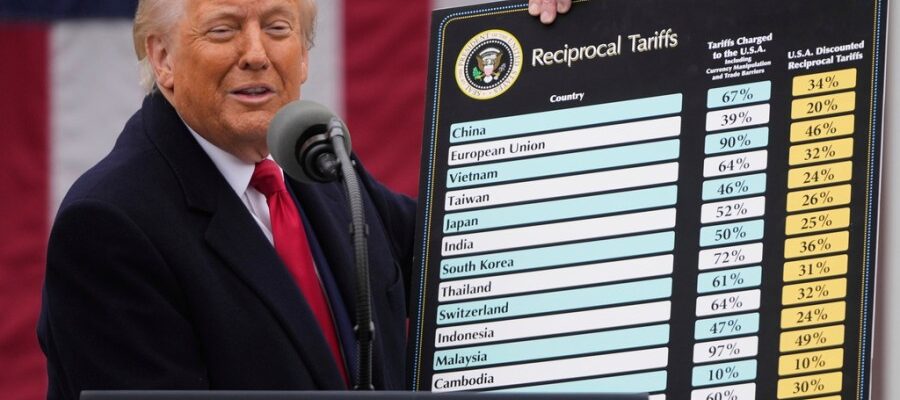Tariff revenues should be invested in workers, not in balance sheets

Over the past nine months, the Trump administration has imposed sweeping new tariffs on imports from most parts of the world. This includes key products, such as steel and aluminium. Starting next month, more tariffs will be promised on semiconductors, medicines, furniture, and other products.
These actions have weakened our alliances, disrupted supply chains, and increased costs for American businesses and consumers. To be clear, these tariffs are actually a tax increase for businesses and households. The Yale Budget Lab estimates that the 2025 tariffs will increase prices by 1.7% in the short term, which equates to an average per-household income loss of $2,400 by the end of the year.
These tariffs have generated a windfall of new tax revenues that are worth deliberate and strategic use. To understand the magnitude, consider the following: Before tariff increases in 2025, the effective average tariff rate in the United States was 2.4%. It is estimated that by the end of September, consumers faced an average effective tariff rate of 17.9 percent, the highest since 1934.
In September, the US government collected $31.3 billion in tariff revenue, bringing the total for the year to $214.9 billion. By comparison, the United States collected $77 billion in tariff revenue during fiscal year 2024. In other words: the government is now collecting tariff revenue at a much higher pace than at any time in recent memory.
Even if the administration loses a Supreme Court case challenging the International Emergency Economic Powers Act or “national emergency” tariffs in November, the president has already announced a new slate of trade cases that will likely impose new tariffs.
These definitions come at a particularly sensitive time. Unemployment rates are increasing, partly due to tariffs, but largely due to the increasing influence of automation and other new technologies on the market.
The administration has floated uses for tariff revenue that range from compensating farmers harmed by retaliation for the tariffs, a self-imposed injury that the United States has imposed, to paying off a very small portion of the $3.5 trillion increase in the fiscal deficit caused by the “big, beautiful bill” passed earlier this year.
The most focused, high-impact option is to spread these revenues to benefit American workers by upgrading the American workforce. Today, the United States suffers from a mismatch between available jobs and the skilled workers to fill these jobs. As of July 2025, manufacturing employment has risen to 437,000, With expectations that by 2028 up to 2.4 million manufacturing jobs may remain unfilled. As technologies such as artificial intelligence and robotics move into the mainstream, there are expectations of greater disruption to the economy and labor market, and a greater gap in skilled workers.
Congress and the Administration must commit to investing this significant stream of tariff revenues in a historic workforce skills and job training program designed to prepare workers for the coming economic and technological shifts in the labor market. Improving the skills of the US workforce will also reduce income inequality and strengthen the middle class, all while making the United States more globally competitive.
A share of the tariff revenue stream should also be used to restore and expand Trade Adjustment Assistance, a program that expired in 2022, which was specifically designed to compensate workers affected by trade and improve their skills.
The American Leadership Initiative focuses on developing policies that will strengthen the American economy and its workers in the 21st century. While the Administration’s tariff policy does not advance this goal, the availability of abundant tariff revenues represents a unique opportunity to improve the lot of American workers in the future.
Orit Frenkel, Ph.D., is CEO of the American Leadership Initiative.
